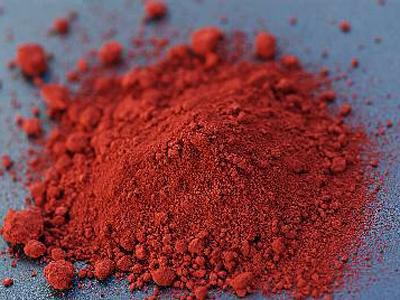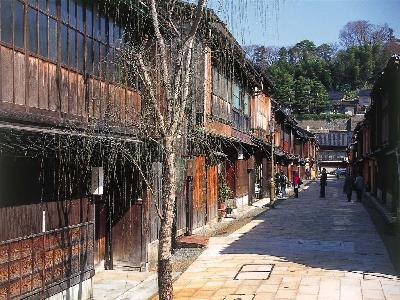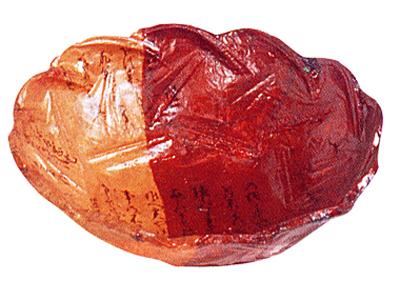|
Bengara is inorganic red pigment whose main ingredient is iron oxide, Fe2O3, and it is the oldest coloring agent known to mankind.
Bengara is written弁柄, in some cases紅殻, in Kanji and is also known as Indian Red and Venetian Red.
Bengara was thought to be introduced from China, via the Korean peninsula, into Okinawa. The name Bengara was believed to have been derived from Bengal, the Indian province that most of the iron oxide came from.
Bengara’s ingredient, iron oxide Fe2O3, was produced naturally more than any other iron oxide based coloring agents. However because its mineral composition is very similar to that of red rust from iron, nowadays artificially composed dyes have become more common than naturally produced ones. Nariwa-cho, Takahashi, Okayama Prefecture, is the only remaining place in Japan that still produces Bengara naturally.
In ancient time, Bengara was rare and much treasured as a noble color. Shuri Castle in Okinawa is known to have Bengara red color. Because Bengara was superior for coloring and sealing as well as resistant to heat and water, it was applied to wooden buildings to prevent aging damage.
The color of Bengara might lack certain brightness more common in other red based pigments, but its flamboyance today still keeps holding people’s affection.
Bengara is written弁柄, in some cases紅殻, in Kanji and is also known as Indian Red and Venetian Red.
Bengara was thought to be introduced from China, via the Korean peninsula, into Okinawa. The name Bengara was believed to have been derived from Bengal, the Indian province that most of the iron oxide came from.
Bengara’s ingredient, iron oxide Fe2O3, was produced naturally more than any other iron oxide based coloring agents. However because its mineral composition is very similar to that of red rust from iron, nowadays artificially composed dyes have become more common than naturally produced ones. Nariwa-cho, Takahashi, Okayama Prefecture, is the only remaining place in Japan that still produces Bengara naturally.
In ancient time, Bengara was rare and much treasured as a noble color. Shuri Castle in Okinawa is known to have Bengara red color. Because Bengara was superior for coloring and sealing as well as resistant to heat and water, it was applied to wooden buildings to prevent aging damage.
The color of Bengara might lack certain brightness more common in other red based pigments, but its flamboyance today still keeps holding people’s affection.
| [+ADDRESS] | 
|















